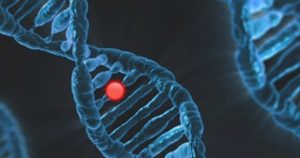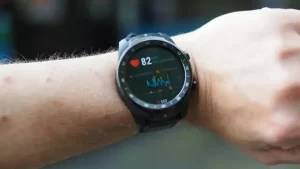Skin cancer breakthrough: Researchers successfully make cells ‘suicide’
- Aspirin: Study Finds Greater Benefits for These Colorectal Cancer Patients
- Cancer Can Occur Without Genetic Mutations?
- Statins Lower Blood Lipids: How Long is a Course?
- Warning: Smartwatch Blood Sugar Measurement Deemed Dangerous
- Mifepristone: A Safe and Effective Abortion Option Amidst Controversy
- Asbestos Detected in Buildings Damaged in Ukraine: Analyzed by Japanese Company
Skin cancer breakthrough: Researchers successfully make cells ‘suicide’
- Red Yeast Rice Scare Grips Japan: Over 114 Hospitalized and 5 Deaths
- Long COVID Brain Fog: Blood-Brain Barrier Damage and Persistent Inflammation
- FDA has mandated a top-level black box warning for all marketed CAR-T therapies
- Can people with high blood pressure eat peanuts?
- What is the difference between dopamine and dobutamine?
- How long can the patient live after heart stent surgery?
Skin cancer breakthrough: Researchers successfully make cells ‘suicide’.
A new study shows that the protein gasdermin A induces pyroptosis, a form of programmed cell death, in the skin, the body’s largest organ. Every second, a million cells in your body die. That means 2.6 pounds of cells die in one day.
But there is no need to worry. Cell death is an important process in the body because it allows unwanted cells to be eliminated. Many diseases can be caused or worsened by cells failing to die or dying when they shouldn’t.
Cells may die from damage, however, most cells kill themselves. Cells die in many different ways. Some are the result of systematic, “programmed” procedures. Some cell death programs leave no sign of dead cells, while others use dead cells’ substances to attract the immune system.
Researchers from Emory University have found a mechanism by which skin cells die, which could lead to new treatments for “flesh-eating” infections, alopecia, hives, and possibly even melanoma, the deadliest type of skin cancer.
The findings, published in the journal Nature , are part of an ongoing study led by Christopher LaRock, Ph.D., associate professor in Emory University’s Department of Microbiology and Immunology, and Doris LaRock, Ph.D., assistant scientist at Emory University, and published by the National Allergy and Infection Funded by the Institute of Diseases.

According to LaRock, the study shows that a protein his team discovered called gasdermin A causes pyroptosis, or cell death, in the skin, the body’s largest organ.
According to him, the protein acts as an early warning system against bacterial attack by attracting more immune cells to the area.
“Essentially, what we’re seeing is that skin cells would rather self-destruct than be overrun by dangerous bacteria,” LaRock said.
The body relies on cell death to stay healthy — although this process can also be accidentally turned on, causing damage.
However, until now, not much was known about how this process happened. The new discovery advances the scientific understanding of cell death as it clarifies what triggers it in the skin.
LaRock points out that bacteria like Group A Streptococcus (GAS) are considered a major cause of skin infections such as necrotizing fasciitis or “flesh-eating” disease, killing and debilitating hundreds of thousands of people each year because clinicians often rely on Debridement and amputation, because antibiotics alone won’t do.
“This study shows how skin cells detect GAS and how it evades antibiotics by hiding inside cells, and we hope to target these processes so that we can both save lives and reduce the need for surgery,” LaRock said.
LaRock said the new immune protein gasdermin A they discovered during their research may play an important role in preventing not only GAS, but other pathogens as well.
He added: “We are looking at how we can use our findings to target cell death to help us better treat infections, as well as diseases such as hair loss, dermatitis, psoriasis and keloids, because these are all diseases that involve skin cell death.”

The study used cells from volunteers to infect human skin in vitro. A mouse model was also used to study how the skin interacts with immune cells.
A key question that LaRock and his team are investigating is how the body distinguishes a threatening microbe from a benign one.
Scientists currently know a lot about how this process works in the later stages of the disease, but less at the onset.
“Pathogens like Staphylococcus aureus and GAS complicate our understanding because they are sometimes part of the microbiome, sometimes causing mild illness and sometimes severe and fatal disease,” LaRock noted. “It’s important for our bodies to distinguish between dangerous pathogens and harmless ones so we can appropriately scale our antimicrobial response.”
LaRock, who has studied pathogens for many years, said the NIAID grant has enabled his lab to study microbes and factors that fuel inflammation. “Some pathogens are simply deadly because they weaken our inflammatory response, like Yersinia, which killed millions in the Middle Ages from plague. But GAS is different because it deliberately overactivates inflammation to Sow chaos.”
The researchers are also supported by an internal grant from the Woodruff Health Sciences Center and are working with collaborators across the University to extend their observations to other diseases.
Skin cancer breakthrough: Researchers successfully make cells ‘suicide’
(source:internet, reference only)
Disclaimer of medicaltrend.org
Important Note: The information provided is for informational purposes only and should not be considered as medical advice.



